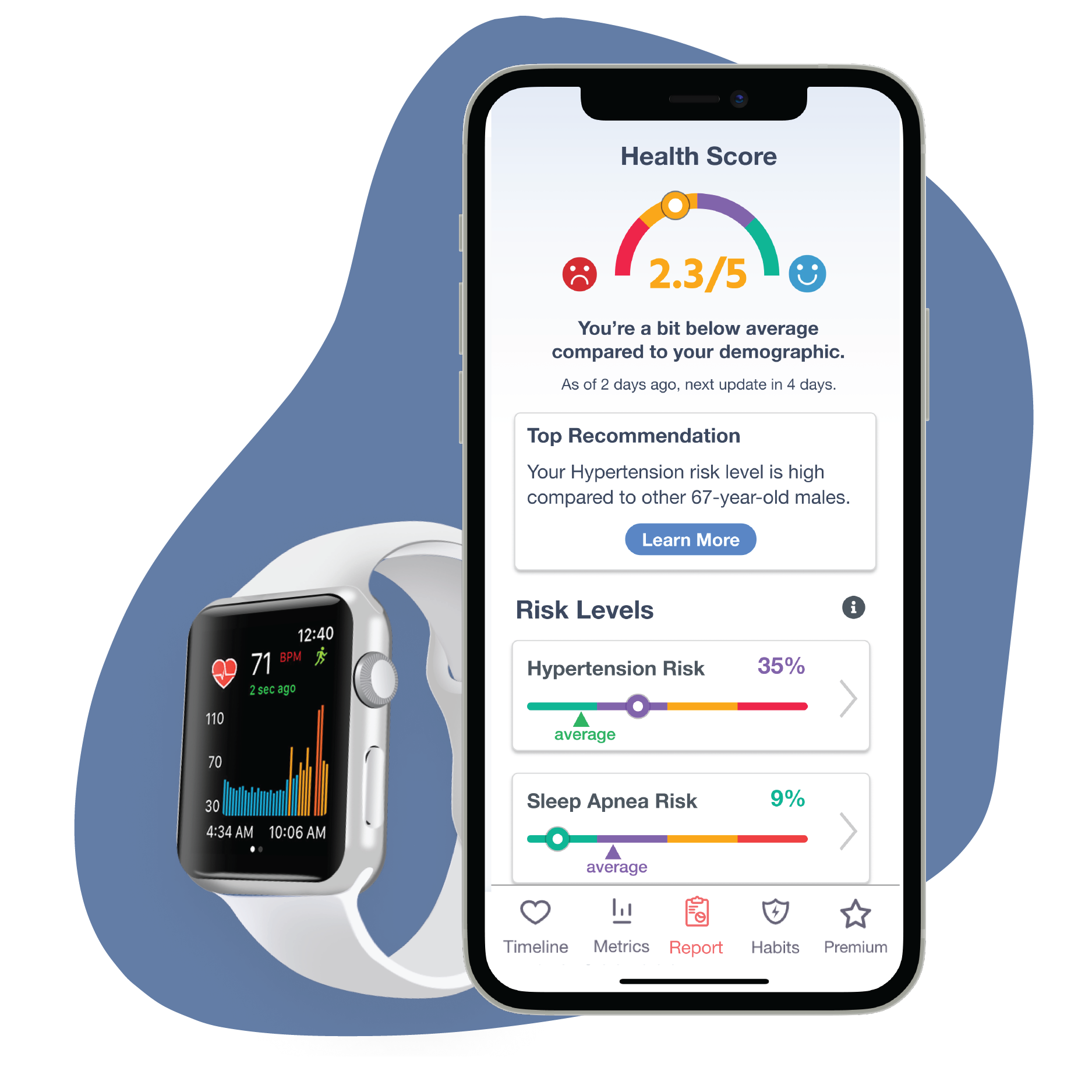
Our circadian rhythms, or internal clocks, help our bodies regulate many of their important functions, including our sleep-wake cycles. Circadian rhythms are based on a series of physiological and external factors, sunlight being one of them.
During a time change, we don’t only shift the clocks, we also disturb the body’s natural rhythm. This can affect our duration and quality of sleep, immune health, and our cardiovascular system at large. While the fall time change does affect heart health, it doesn’t have nearly as detrimental an impact as Daylight Saving Time in spring.
Daylight Saving Time can contribute to a wide range of issues that can contribute to worsened heart health, including increases in:
- Risk of heart attack
- Risk of cardiovascular disease
- Blood pressure
- Heart rate
- Cortisol levels
- Risk of diabetes
- Risk of arrhythmias
All of these factors also leave us more susceptible to an increased risk of cardiovascular disease. Let’s dive a little deeper:
One of the most dangerous impacts daylight savings has on our bodies is how significantly it increases risk of heart attack. A New England Journal of Medicine study showed that there’s up to a 24% increase in risk of heart attack on the Monday after the spring time change.1 (A rather startling stat.) This study looked at the data from a Swedish national heart attack registry and discovered that the rate of heart attacks was considerably higher in the days following the time change compared to other times of the year.
While the reason behind this jump in heart attacks is still in the process of being better understood, one speculation is based on the disruption of our circadian rhythms. Because the circadian rhythms is connected to hormones and other physiological functions, when the rhythm is disturbed, it can result in increased blood pressure, heart rate, and cortisol (the stress hormone) levels. All of which increase the risk of heart attack.
There are always steps you can take to keep your heart safe, including during the spring time change. The American Heart Association offers these recommendations:5
- Getting ample rest before and after the time change
- Slowly adjusting your sleep schedule in the days leading up to the time change
- Maintaining a heart healthy diet
- Keeping up with your regular exercise routines
- Managing stress
We also recommend using the many tools Cardiogram offers to help protect your heart during Daylight Saving Time.
Tag your sleep
Enroll in a habit
SET UP Heart rate alerts
Share data with your doctor
- Janszky I, Ljung R. Shifts to and from Daylight Saving Time and Incidence of Myocardial Infarction. The New England Journal of Medicine. 2008; 359(18): 1966-1968. doi: 10.1056/NEJMc0807104
- Kantermann T, Juda M, Merrow M, Roenneberg T. The Human Circadian Clock's Seasonal Adjustment Is Disrupted by Daylight Saving Time. Current Biology. 2007; 17(22): 1996-2000. doi: 10.1016/j.cub.2007.10.025
- Reutrakul S, Siwasaranond N, Nimitphong H, Saetung S, Chirakalwasan N, Ongphiphadhanakul B, et al. Effects of an Acute Sleep Deprivation on Glucose Metabolism in Subjects with Normal Glucose Tolerance. Journal of Clinical Endocrinology & Metabolism. 2013; 98(6): E1071-E1077. doi: 10.1210/jc.2012-4133
- Kantermann T, Duboutay F, Haubruge D, Hampton S, Darling A, Berry JL, et al. The Acute and Chronic Effects of "Spring Forward" and "Fall Back" Time Changes on Human Sleep and Cardiovascular Function. Sleep Medicine. 2017; 40: 169-177. doi: 10.1016/j.sleep.2017.10.007
- American Heart Association. Spring Forward With These Heart-Healthy Tips. 2019. https://www.heart.org/en/news/2019/03/04/spring-forward-with-these-heart-healthy-tips. Accessed March 6, 2023.



